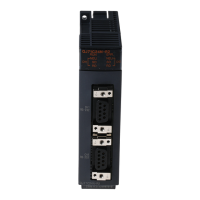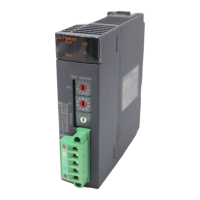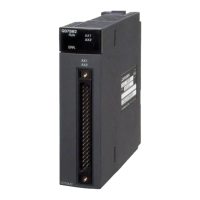8 - 14 8 - 14
MELSEC-Q
8 TROUBLESHOOTING
8.2 Troubleshooting
Check the PLC CPU for an error before starting the troubleshooting of the network
module and network.
If the RUN LED of the PLC CPU is off/flickering or the ERR. LED is on, identify the
error that occurred in the PLC CPU, and take corrective action.
(1) Check that the host has joined the network.
Start the troubleshooting of the host by monitoring the status of the host.
First, check whether or not the host has joined the network.
This is important because it is not possible to monitor the status of other stations
and to perform troubleshooting on other stations unless the host has joined the
network.
The troubleshooting flowchart shown below explains the sequence from checking
an error to enabling a baton pass (in order to join the network).
(a) For the remote master module
Is the "T.PASS"
LED of the host lit?
Is the "RUN" LED lit?
Start
Is the "ERR." LED lit?
Takes action according to the
contents of SW47 and the error
code contents that have
been stored in SW48.
<Troubleshooting>
No
Yes
Is the
power supplied
to the power source
module?
Yes
YES
Execute offline tests.
1) Hardware test
2) Self-loopback test
3) Internal self-loopback test
Test results?
NG
Replace the master module.
End
The host is
in the normal status.
Yes
The host's baton pass
is normal.
Possible module WDT error
<Troubleshooting>
Check :
1) Verify the base installation.
2) Reset the CPU.
3) Replace the module.
4) Whether or not the host's
I/O slot is assigned to a
"vacant area."
<Cause>
The power is not being supplied.
Or, the overcurrent protection is
active.
<Troubleshooting>
1) Verify the power supply status.
2) Check that the total current
consumption of the module
installed on the base unit
does not exceed the rated
output current of the power
supply module used.
<Cause>
OK
No
No
No
E

